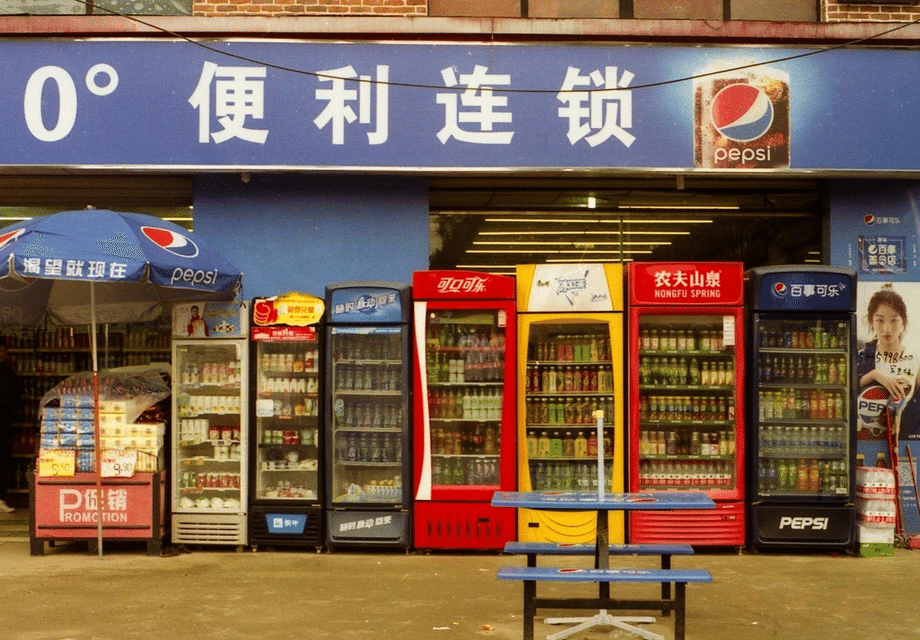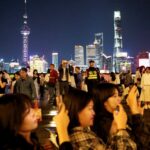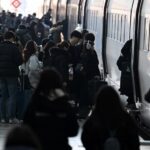Why South Korea is acting now
South Korea will require major bottled water and nonalcoholic beverage producers to include recycled plastic in their PET bottles starting on Jan 1, 2026. The new rule sets a minimum of 10 percent recycled PET, often called rPET, in each bottle, and applies to companies that use more than 5,000 metric tons of PET bottles a year. About ten firms fall in the first wave, among them Coca Cola Korea, Lotte Chilsung Beverage, and Jeju Development Corp, the producer of Samdasoo mineral water.
Officials designed the mandate to jump start true bottle to bottle recycling for drinks. Until now, only PET resin makers faced recycled content obligations. Beverage companies were exempt, which left a gap between collection of used bottles and demand for food grade recycled material from bottlers. The ministry plans to lift the minimum to 30 percent by 2030 and to expand the rule to producers that use more than 1,000 tons of PET annually.
Regulators say the change will cut plastic waste, reduce the carbon footprint of packaging, and lessen reliance on virgin resin. Government research concluded that bottles made with recycled PET are safe for beverages when processed under standards drawn up by the Environment Ministry and the Ministry of Food and Drug Safety. Seoul has already put recycled plastic into practice for its bottled tap water brand Arisu, which switched to containers using recycled material in April 2023.
PET is the clear, lightweight plastic used for most beverage bottles. Recycled PET is made by collecting used bottles, cleaning and converting them back into plastic pellets, and then using those pellets to make new containers. A 10 percent minimum means one tenth of the plastic in each eligible bottle must come from recycled sources rather than newly produced resin.
What exactly will change in 2026
The 2026 mandate covers bottled water and nonalcoholic drinks packaged in PET. It requires a minimum 10 percent share of recycled PET in bottles made by producers that consume more than 5,000 metric tons of PET bottles a year. Compliance begins on Jan 1, 2026.
The reform is part of an amendment to rules under the Act on the Promotion of Saving and Recycling of Resources. The government also set recycled content duties for raw material makers. PET resin producers that make more than 10,000 tons per year must include at least 3 percent recycled feedstock in their output. Authorities expect the new requirements to drive the use of about 20,000 tons of recycled plastic a year by bottled water and beverage makers.
Companies in the first wave
Roughly ten large bottlers meet the threshold today. That list includes global and domestic brands that dominate the bottled water and soft drink market. The Environment Ministry intends to widen the scope to cover companies using more than 1,000 tons of PET bottles per year in the coming years. The minimum recycled content is scheduled to rise to 30 percent by 2030, matching targets that are taking shape in other major markets.
Producers will need verifiable records of recycled content use, clear supplier contracts for food grade recycled pellets, and quality checks at incoming inspection. Many brands already run packaging sustainability programs, so the new legal thresholds convert voluntary targets into binding requirements backed by safety and testing standards.
How bottle to bottle recycling works
The bottle to bottle loop relies on a sequence of controlled steps. Used PET bottles are collected, then sorted to remove contaminants. Bottles are washed, labels and caps are separated, and the clean bottles are shredded into flakes. The flakes go through intensive cleaning and a high temperature process that decontaminates the plastic. The material is then remelted and turned into pellets that can be used to make new bottles.
Before those pellets become beverage packaging, producers run migration and quality tests to confirm that no harmful substances can transfer into drinks under typical storage and use. Korean authorities have codified the process steps and testing criteria so that both recyclers and bottlers work to the same food safety standard.
Two main recycling routes exist for PET. Mechanical recycling follows the steps above and preserves the polymer. Chemical recycling breaks PET down into its basic building blocks, which can be repolymerized into material comparable to virgin resin. Mechanical routes are currently the backbone for food grade recycled PET in many markets because they are mature and cost effective when clean feedstock is available.
Consistent quality depends on the purity of the input. Colorless bottles without full shrink sleeves are easier to sort accurately, which raises the yield of clean flakes. Korea has pressed its beverage sector for design that supports recycling, including wider use of colorless PET and labels that are easy to remove.
Is recycled PET safe for drinks
Food safety has been the primary concern that held back bottle to bottle use. Beverage companies worry about chemical migration, off taste or odor, and changes in bottle clarity. Government backed studies in Korea found that bottles made with recycled PET meet safety thresholds when the material is processed under the prescribed recycling standard and then verified by migration tests. Officials also reported that recycled PET from colored bottles can be used safely once it has been decontaminated to the required level, although bottles may not always look perfectly transparent.
These conclusions track with international practice. Regulators in advanced markets require that recyclers demonstrate that their process removes potential contaminants to a level that provides a large safety margin. Bottlers then validate the final container by testing it with the drinks they plan to sell and by monitoring production. Consumers may notice a slight change in visual clarity in some packages. Taste and odor should meet brand specifications if suppliers deliver certified food grade material and bottlers apply normal quality controls.
Industry concerns, quality and cost
Brands face practical challenges under a recycled content rule. Food grade recycled pellets must be available in sufficient volume, at consistent quality, and at a reasonable price. Supply depends on high separate collection rates and clean sorting. Korea already collects a large share of PET bottles, but building a bottle to bottle market means more of that material must be delivered in food grade form rather than diverted to fiber or other uses.
Design for recycling is another lever. Colorless bottles, sleeves that are easy to strip, and compatible closures simplify sorting and raise yields. Many companies are also exploring label free approaches. Equipment makers have rolled out systems that print required production codes and QR codes directly on caps. Several Korean manufacturers have begun adopting direct cap printing to support packages with fewer label materials while keeping high speed lines running.
Price dynamics will evolve as the rule takes effect. Recycled PET can carry a premium over virgin resin when supply is tight, which could lift packaging costs for some products. Cost pressure tends to ease as new recycling capacity comes online and as suppliers and bottlers sign longer term contracts that stabilize volumes and specifications.
How Korea compares with global rules
Policy trends are converging across major markets. The European Union has set a 30 percent recycled content target for PET bottles by 2030, which Germany is following. The United Kingdom plans to reach 30 percent by 2026. Korea aims to match the 30 percent level by 2030, with a national program that builds capacity and confidence in food grade recycling along the way.
Other countries in Asia are advancing packaging reform on parallel tracks. India has updated plastic waste rules to require on pack traceability with barcodes or QR codes from 2025, a step that will make it easier to monitor compliance with producer responsibility obligations. Thailand has banned imports of plastic waste starting in 2025 to reduce pollution linked to foreign scrap. City and regional governments are also acting. Hanois plan phases out single use plastic items across tourism and retail by 2028, and the Bali provincial administration is moving to restrict small plastic sachets after earlier bottle rules.
These measures differ in scope, but the intent is similar. Reduce plastic leakage, strengthen reuse and recycling systems, and hold producers accountable for the full life of their packaging.
What it means for shoppers and recycling habits
Consumers in Korea are unlikely to notice dramatic changes on day one. Some bottles may appear a touch less clear, and labels may continue to evolve so they can be removed more easily or replaced by printed codes on caps. The drink inside should taste the same because bottlers must meet the same safety and quality standards regardless of the plastic recipe.
Household actions still matter. Empty bottles, keep caps on unless local guidance says otherwise, and put bottles in the correct recycling stream. Avoid crushing bottles so sorting equipment can identify them. Remove full sleeve labels when possible. Clean, dry, and properly sorted bottles are easier to turn back into food grade material.
What to watch between 2026 and 2030
Key milestones are already set. The 10 percent minimum begins in 2026 for large producers. The Environment Ministry plans to add companies that use more than 1,000 tons per year and to raise the minimum to 30 percent by 2030. Resin producers also have a 3 percent recycled content duty at high production volumes. Together, these steps are meant to stimulate investment in high grade recycling and to tie collection systems more tightly to bottling demand.
New standards and auditing will shape how the market works. Recyclers will need certifications for their processes. Bottlers will track recycled content at the lot level and maintain records for regulators. Greater transparency will help suppliers and brands match quality expectations, and it will give consumers confidence that recycled content claims mean what they say.
Key Points
- From Jan 1, 2026, large bottled water and nonalcoholic beverage producers in Korea must use at least 10 percent recycled PET in their bottles.
- The rule applies first to companies that consume more than 5,000 metric tons of PET bottles a year, about ten firms including Coca Cola Korea, Lotte Chilsung, and Jeju Development Corp.
- The requirement will expand to producers using more than 1,000 tons per year and will rise to 30 percent recycled content by 2030.
- Resin makers that produce over 10,000 tons a year must include at least 3 percent recycled feedstock.
- Government studies say food grade recycled PET is safe when processed under defined standards and verified by migration tests.
- Seoul’s Arisu bottled tap water has used recycled plastic since April 2023, demonstrating early adoption.
- The standard bottle to bottle process includes sorting, washing, shredding, decontamination, remelting into pellets, and safety testing.
- Korea’s targets align with the European Union and Germany at 30 percent by 2030, while the United Kingdom aims for 30 percent by 2026.
- Industry will focus on secure supply of food grade recycled pellets, design for recycling, and quality control to prevent taste or clarity issues.
- Consumers may see small changes in appearance, but the safety and quality of drinks remain governed by the same checks and standards.




